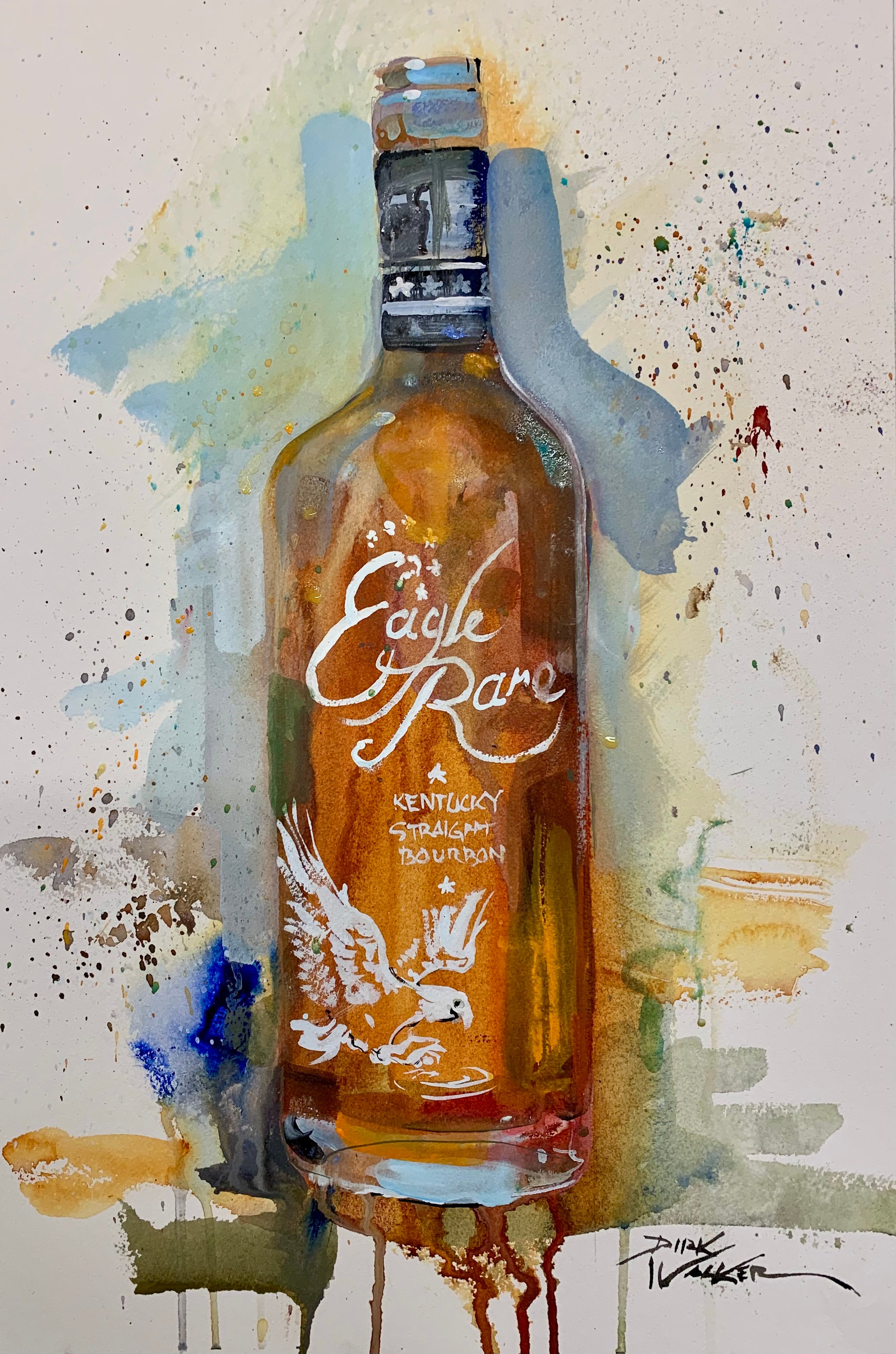Recording the Essence of Bourbon Art Via Unique Visual Depictions and Designs
The art of whiskey expands beyond the fluid itself, showing up via a range of visual depictions that envelop its storied heritage and workmanship. What stays to be revealed is just how these progressing styles mirror not only the scotch itself yet also the changing landscape of artistic analysis. Bourbon Art.
The History of Bourbon Art

As whiskey manufacturing spread, so as well did the desire to boost its experience with art. From the intricate inscriptions on early casks to the sophisticated tags of modern bottles, each component mirrors an one-of-a-kind creative vision, functioning as an aesthetic narrative of the whiskey's heritage.
In the 19th and 18th centuries, the increase of the industrial revolution further boosted bourbon art, causing ingenious product packaging and marketing that caught consumer interest. Artists and developers started explore looks, imbuing whiskey-related images with symbolic meanings that communicated notions of tradition, workmanship, and area.
Today, whiskey art continues to develop, blending typical methods with modern art kinds. Bourbon Art. This recurring discussion in between the spirit and its graph emphasizes the long-lasting bond between bourbon and culture, enriching the total experience for lovers worldwide
Iconic Bottle Styles
While several elements contribute to the allure of bourbon, iconic bottle layouts play a crucial duty in shaping customer understanding and enhancing the total experience. The aesthetic discussion of scotch containers is not merely a visual consideration; it works as a bridge between the item and the customer, stimulating feelings and establishing expectations.
Unique shapes, products, and closures can boost a bourbon brand name's identity, making it instantaneously identifiable on congested shelves. The timeless Glenfiddich bottle, with its elegant tapered shape, shares a feeling of tradition and workmanship, while the bold, modern layout of the Balvenie container mirrors development and sophistication. The use of tinted glass or one-of-a-kind appearances can recommend the quality and character of the scotch within.
Renowned layouts usually incorporate components of cultural heritage, signifying the brand's background and link to its roots. Brand Names like Jack Daniel's make use of an uncomplicated, robust style that resonates with its American scotch heritage. Inevitably, the effect of bottle design prolongs past mere capability; it encapsulates the significance of the brand, welcoming consumers to explore and delight in the abundant tapestry of scotch society.
Label Art Work and Branding
Container layouts often set the phase for what consumers can anticipate, yet tag art work and branding play a just as substantial role in connecting a whiskey's identification. The tag works as the initial factor of call between the product and the customer, enveloping the significance of the whiskey within its visual aspects.
Efficient tag art work incorporates imagery, color, and typography to develop a story that reverberates with the more information brand's heritage and target market. For example, a label featuring intricate illustrations and vintage fonts might evoke a sense of custom and workmanship, attracting lovers. In contrast, bold shades and contemporary design components could attract a more youthful group looking for advancement and exhilaration.


Digital Photography and Visual Storytelling
Catching the significance of whiskey via photography and aesthetic narration is an art kind that raises the brand experience. This tool transcends plain item depiction, delving right into the complex stories that border each bottle. By utilizing engaging imagery, professional photographers can stimulate feelings that resonate with customers, inevitably forging a deeper connection to the whiskey brand name.
Visual storytelling in bourbon photography usually makes use of rich appearances, lighting, and structure to highlight the unique features of the spirit. The interaction of light and darkness can highlight the brownish-yellow tones of scotch, while the selection of history elements-- such as rustic barrels or sophisticated glass wares-- can reinforce the brand name's heritage or lifestyle associations.
Furthermore, catching the ritualistic aspects of bourbon consumption, from the pouring to the tasting, welcomes viewers right into a sensory experience, permitting them to envision the flavors and aromas that await. Each picture not only showcases the product however additionally narrates of workmanship, practice, and the moments that whiskey can improve - Whiskey Art. Thus, photography becomes an effective tool in articulating the identity of scotch brand names, positioning them within the broader cultural landscape
Arising Fads in Bourbon Art
The advancement of scotch art is progressively formed by contemporary trends that show broader societal shifts and consumer choices. This shift not just highlights the significance of sustainability but also boosts Realism Art the narrative bordering bourbon production.
Additionally, electronic art has risen in popularity, permitting ingenious representations of bourbon. Artists are leveraging innovation to craft immersive experiences, such as augmented truth installments that engage audiences and supply a deeper understanding of bourbon's social significance. This fad likewise expands to social media sites platforms, where aesthetically striking material garners attention and cultivates community amongst lovers.
In addition, collaborations between scotch click for source brand names and artists are becoming much more widespread. These partnerships produce limited-edition packaging styles and exclusive artworks that commemorate both the craftsmanship of whiskey and the imagination of musicians. As scotch art remains to progress, these emerging trends will most certainly form its future, promoting a dynamic intersection of society, sustainability, and modern technology within the scotch neighborhood.
Final Thought
In conclusion, the art of whiskey encompasses a diverse selection of visual representations that show its abundant heritage and workmanship. From renowned bottle layouts and detailed label art work to compelling photography, each aspect adds to a more comprehensive narrative that boosts the customer's experience. As arising fads, such as digital art and sustainability, remain to shape this artistic landscape, the multifaceted identification of whiskey stays a withstanding resource of social connection and expedition.

In conclusion, the art of whiskey encompasses a varied selection of aesthetic representations that show its rich heritage and workmanship.